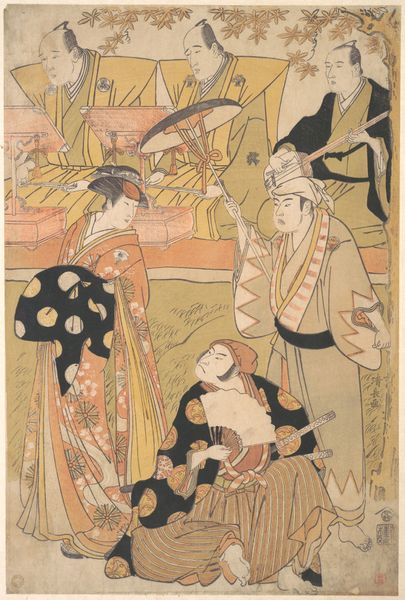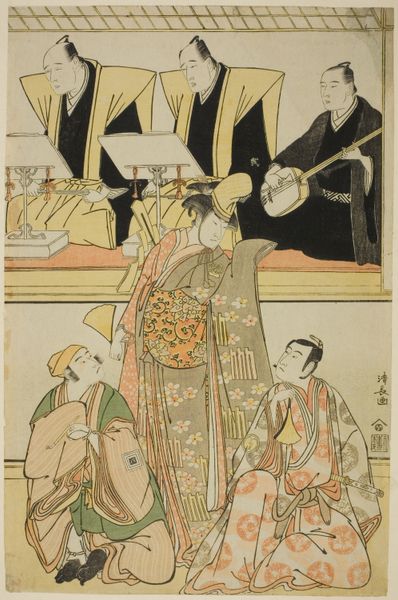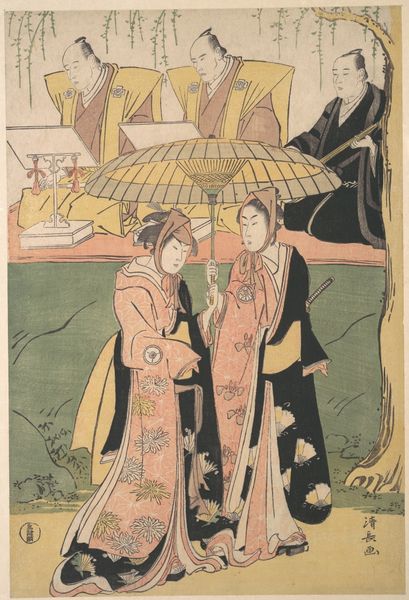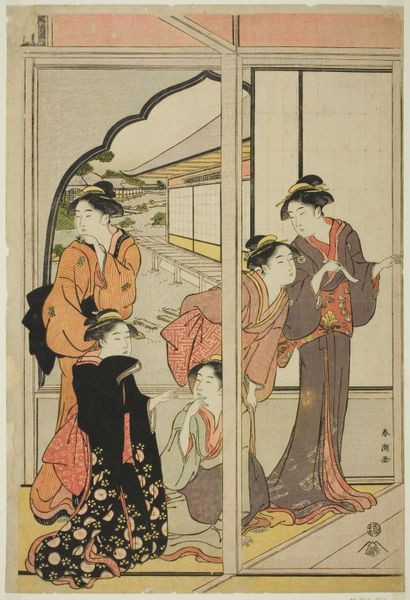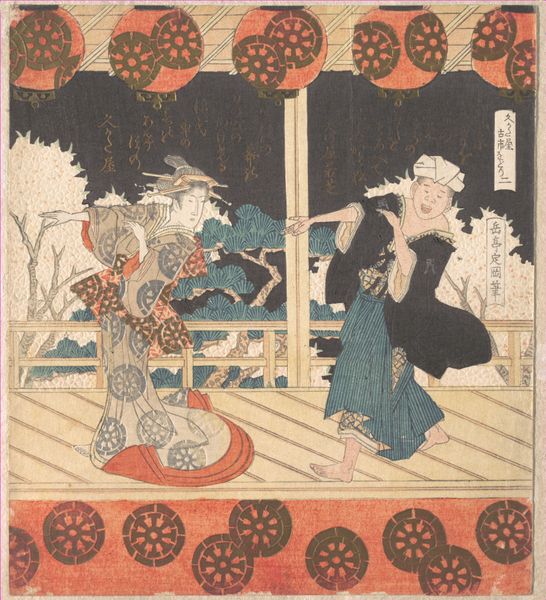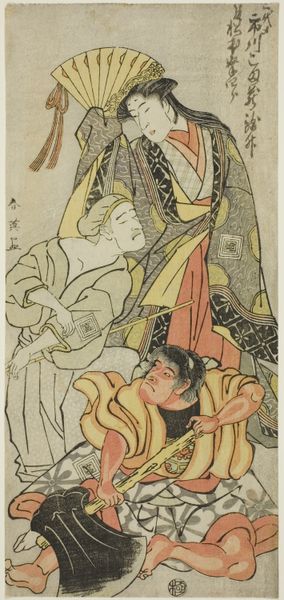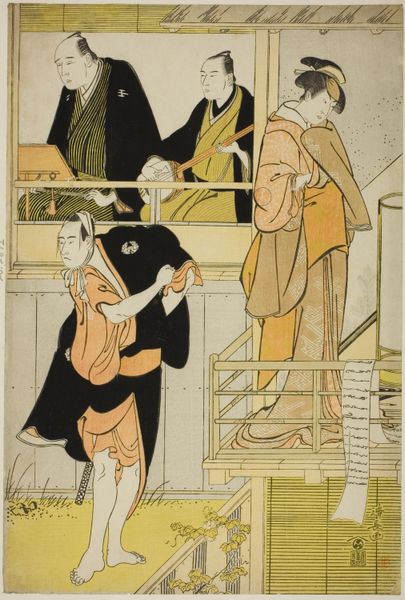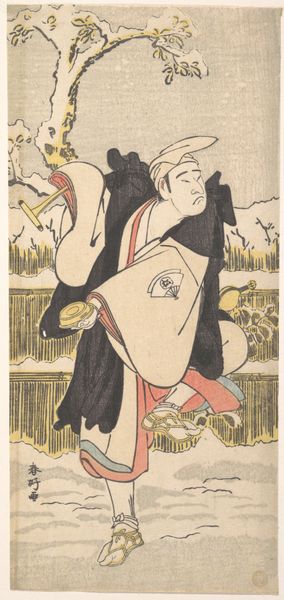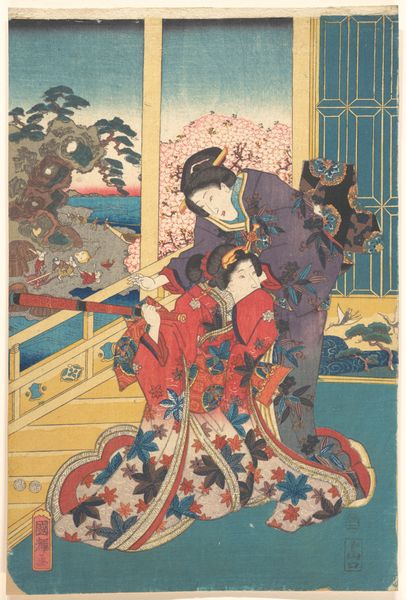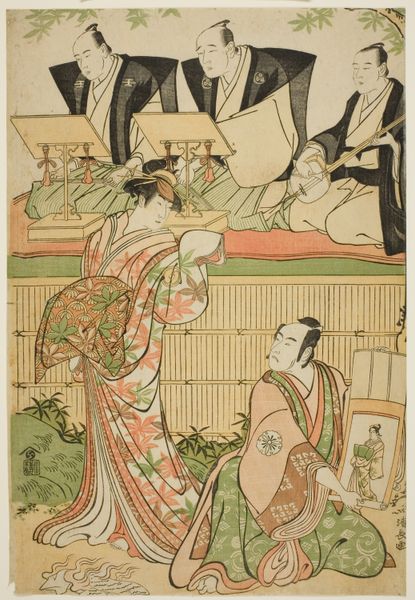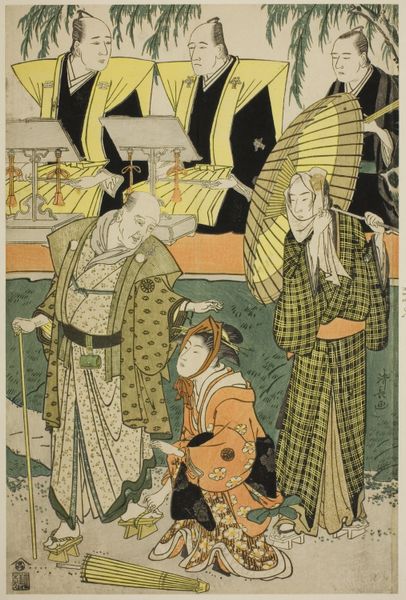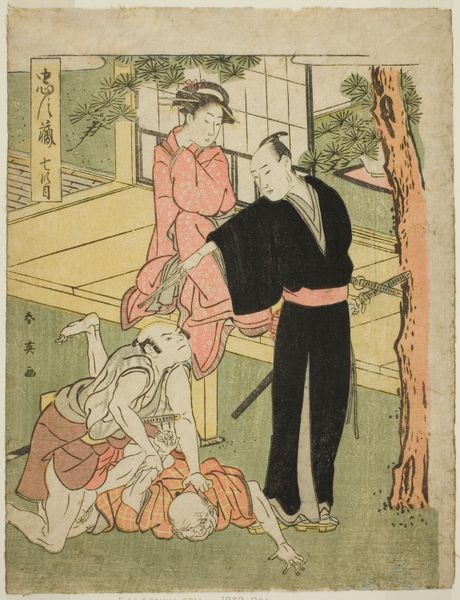
The Actors Sawamura Sojuro III as Soga no Juro, Osagawa Tsuneyo II as Oiso no Tora, Azuma Tozo III as Miura Katagai, and Otani Tokuji I as Danzaburo, in the joruri "Chidorigake Koi no Tamaboko," performed at the Ichimura Theater in the first month, 1784 1784
0:00
0:00
print, woodblock-print
#
portrait
#
ink painting
# print
#
asian-art
#
ukiyo-e
#
japan
#
figuration
#
woodblock-print
#
genre-painting
Dimensions: 38.2 × 25.0 cm
Copyright: Public Domain
Editor: This is "The Actors Sawamura Sojuro III as Soga no Juro, Osagawa Tsuneyo II as Oiso no Tora, Azuma Tozo III as Miura Katagai, and Otani Tokuji I as Danzaburo," a woodblock print by Torii Kiyonaga from 1784. The colors seem muted, and it has this fascinating layered composition. What’s your take on it? Curator: Consider the woodblock itself. Each color necessitates a separate block, painstakingly carved and printed. Look at the fine lines of the kimonos, the subtle gradations of color. This represents significant artisanal labor. The print wasn't simply "made;" it's a product of a complex production process. And what are they producing? A depiction of actors, representing fictional characters! Editor: Right, so the means of production affect the final imagery... and the choice to depict actors on stage. Curator: Precisely. Ukiyo-e prints like this one weren't just aesthetic objects; they were commodities. The audience bought these prints to commemorate a performance, celebrate their favorite actors. Consider the material reality: ink, paper, woodblocks – all traded, sold, consumed. It links artistic practice to broader economic systems. Think about the accessibility created through the multiple reproduction afforded by this print technique. Editor: So the print exists both as a work of art and a commercial product consumed by the public. What are those implications? Curator: Exactly! The commercial aspect dictated content – popular actors, famous scenes. And the material itself, the relatively inexpensive woodblock print, democratized art ownership. This challenges the traditional hierarchy between 'high art' meant for elite display and widely available artistic goods for a larger population. We have to recognize it in the history of labor and economic relationships that create these objects of mass consumption. Editor: That’s given me a whole new perspective. It's not just a pretty picture; it's a window into the economic and social landscape of the Edo period! Curator: Indeed. By considering the materiality, labor, and circulation of this print, we understand its historical significance.
Comments
No comments
Be the first to comment and join the conversation on the ultimate creative platform.
